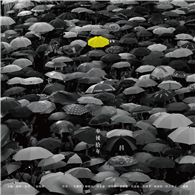As time passes, personal memories of the Great Depression die with those who lived through the desperate 1930s. In the absence of firsthand knowledge, John Steinbeck’s The Grapes of Wrath and the photographs produced for the New Deal’s Farm Security Administration (FSA) now provide most of the images that come to mind when we think of the 1930s. That novel and those photographs, as this book shows, share a history. Fully exploring this complex connection for the first time, Picturing Migrants offers new insight into Steinbeck’s novel and the FSA’s photography--and into the circumstances that have made them enduring icons of the Depression.
| FindBook |
有 1 項符合
Picturing Migrants: The Grapes of Wrath and New Deal Documentary Photographyvolume 18的圖書 |
 |
Picturing Migrants: The Grapes of Wrath and New Deal Documentary Photographyvolume 18 作者:Swensen 出版社:University of Oklahoma Press 出版日期:2022-09-27 語言:英文 規格:平裝 / 272頁 / 普通級/ 初版 |
| 圖書館借閱 |
| 國家圖書館 | 全國圖書書目資訊網 | 國立公共資訊圖書館 | 電子書服務平台 | MetaCat 跨館整合查詢 |
| 臺北市立圖書館 | 新北市立圖書館 | 基隆市公共圖書館 | 桃園市立圖書館 | 新竹縣公共圖書館 |
| 苗栗縣立圖書館 | 臺中市立圖書館 | 彰化縣公共圖書館 | 南投縣文化局 | 雲林縣公共圖書館 |
| 嘉義縣圖書館 | 臺南市立圖書館 | 高雄市立圖書館 | 屏東縣公共圖書館 | 宜蘭縣公共圖書館 |
| 花蓮縣文化局 | 臺東縣文化處 |
|
|
圖書介紹 - 資料來源:博客來 評分:
圖書名稱:Picturing Migrants: The Grapes of Wrath and New Deal Documentary Photographyvolume 18
內容簡介
|











